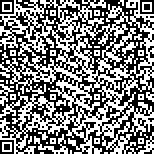焦乐,陶媛媛,金华平,等.基于惯性测量单元和机器学习的呼吸模式检测[J].中华物理医学与康复杂志,2025,47(10):929-935
扫码阅读全文

|
| 基于惯性测量单元和机器学习的呼吸模式检测 |
|
| |
| DOI:10.3760/cma.j.cn421666-20230830-00684 |
| 中文关键词: 呼吸训练 机器学习 运动捕捉 惯性测量单元 腹式呼吸 |
| 英文关键词: Breathing exercises Machine learning Motion capture Inertial measurement units Abdominal breathing |
| 基金项目: |
|
| 摘要点击次数: 446 |
| 全文下载次数: 327 |
| 中文摘要: |
| 目的 采用惯性测量单元(IMU)采集胸腹部呼吸运动数据,建立腹式呼吸(AB)训练检测的机器学习模型。 方法 招募康复治疗师10例作为专业组和进行AB训练的患者15例作为验证组。采用2颗IMU同步采集2组受试者在自然呼吸(NB)、深呼吸(DB)和AB模式下的呼吸运动,提取单个呼吸周期的6个运动学特征,分析其组间和模式间差异,并与胸腹围变化的手动测量值间进行相关性分析。最后以专业组数据为训练集,验证组数据为测试集,构建AB模式检测的支持向量分类模型。 结果 共提取1113个呼吸周期。呼吸模式因素对各运动学特征有较大的影响(0.21≤偏η2≤0.65,P<0.001)。IMU内外轴角度变化与腹围和胸围的变化均呈显著相关性(ρ1=0.928,ρ2=0.807,P<0.001),AB模式下的腹壁角度变化>NB和DB模式下(P<0.001)。最佳分类模型在验证组中F1分数达0.970(灵敏度为0.983,特异度为0.980)。 结论 IMU结合机器学习算法可实现呼吸训练时胸腹部运动的实时量化和AB训练动作的准确识别,在呼吸康复训练监测中具有良好的应用潜力。 |
| 英文摘要: |
| Objective To quantify thoracic and abdominal movements during breathing using inertial measurement units (IMUs) and to build a machine learning model which identifies the abdominal breathing (AB) pattern. Methods Ten rehabilitation therapists formed the study′s professional group, while 15 patients receiving AB training comprised the validation group. Two synchronized IMUs were applied to capture breathing motions during natural breathing (NB), deep breathing (DB) and AB. Six kinematic features were extracted from each respiratory cycle, and inter-group and inter-pattern differences were analyzed. Correlation analysis was also performed with manually measured changes in thoracic and abdominal circumferences. A support vector classification model for AB pattern detection was then developed using data from the professional and validation groups. Results A total of 1113 respiratory cycles were extracted and analyzed. The breathing pattern significantly influenced all of the kinematic features studied (0.21≤partial η2≤0.65, all P≤0.001). The ranges of the angles in medial-lateral axis of the IMUs showed strong correlation with the changes in abdominal and thoracic circumferences (ρ1=0.928,ρ2=0.807, P≤0.001 in both cases). A greater range of abdominal angles was found during AB compared to the other patterns. The best of the models achieved an F1 score of 0.970 (sensitivity: 0.983, specificity: 0.980) in validation. Conclusions AB generates the greatest abdominal movement. Combining IMUs and machine learning can provide real-time quantification of chest movement and accurate detection of AB during breathing training. |
|
查看全文
查看/发表评论 下载PDF阅读器 |
| 关闭 |